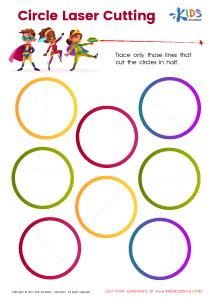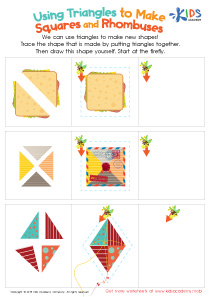Problem-Solving Skills Normal 2D Shapes Worksheets for 5-Year-Olds
5 filtered results
-
From - To
Introduce your 5-year-old to the exciting world of problem-solving with our engaging Normal 2D Shapes worksheets! Designed to foster critical thinking and creativity, these worksheets encourage young learners to identify, manipulate, and explore various two-dimensional shapes, such as circles, triangles, and squares. Through fun activities and vibrant visuals, children will enhance their understanding of shapes while developing essential problem-solving skills. Perfect for both home and classroom settings, these worksheets provide an interactive way to support early math skills in young learners. Head to our website to download these enriching resources and watch your child's confidence soar as they tackle challenges with enthusiasm!
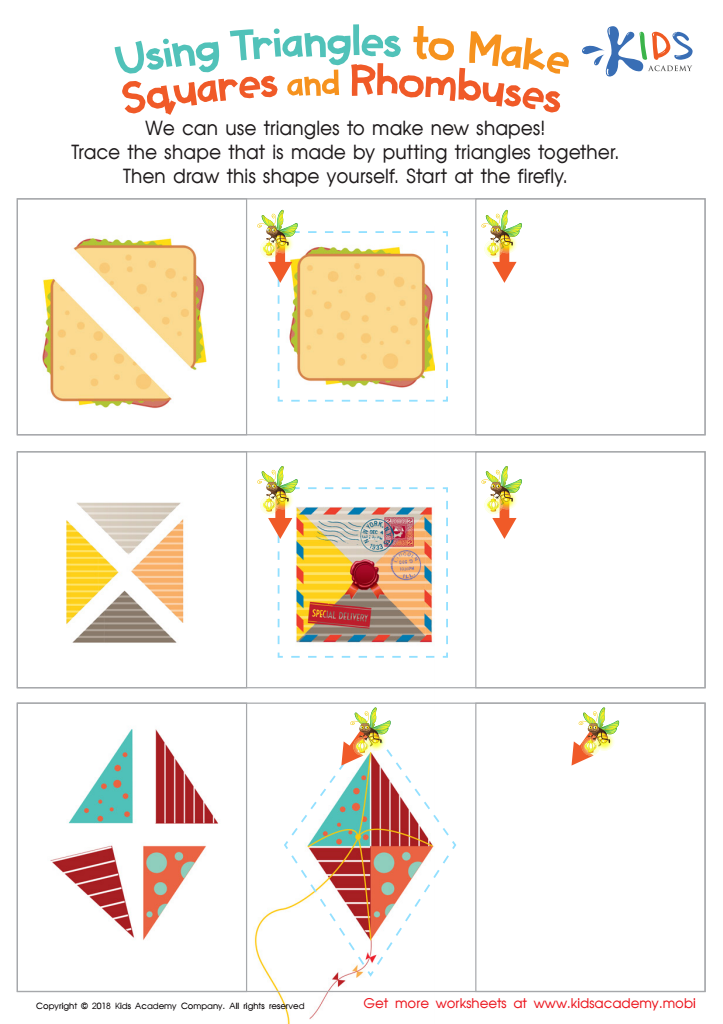

Using Triangles to Make Squares and Rhombuses Worksheet
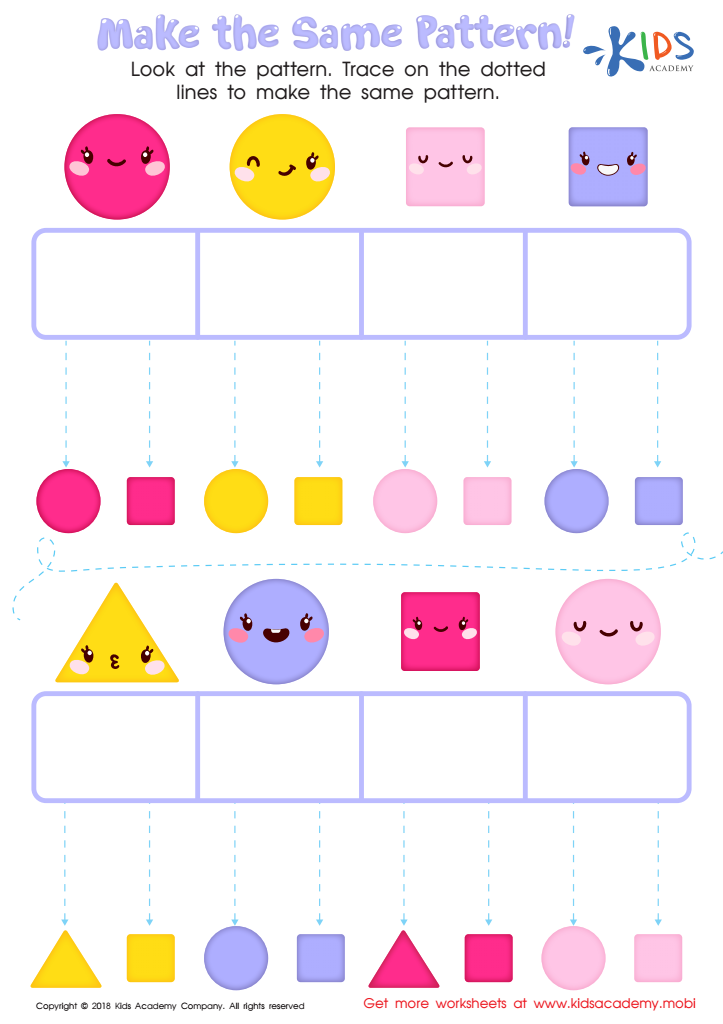

Make the Same Pattern Worksheet
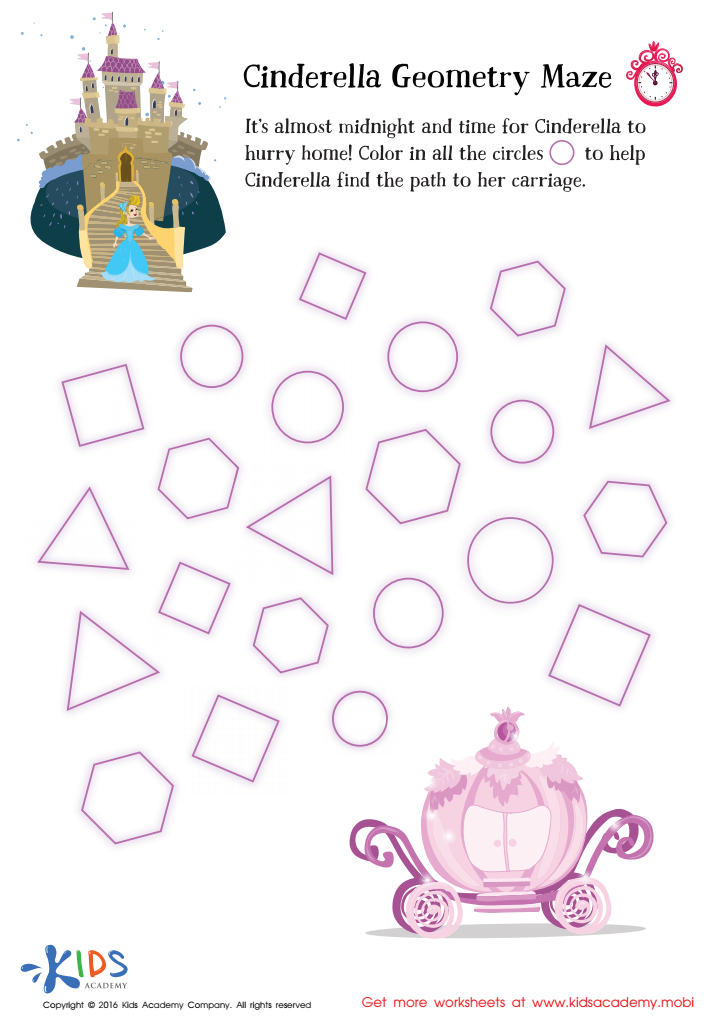

Cinderella Geometry Maze Worksheet


Learning to Draw Crescents And Triangles Worksheet
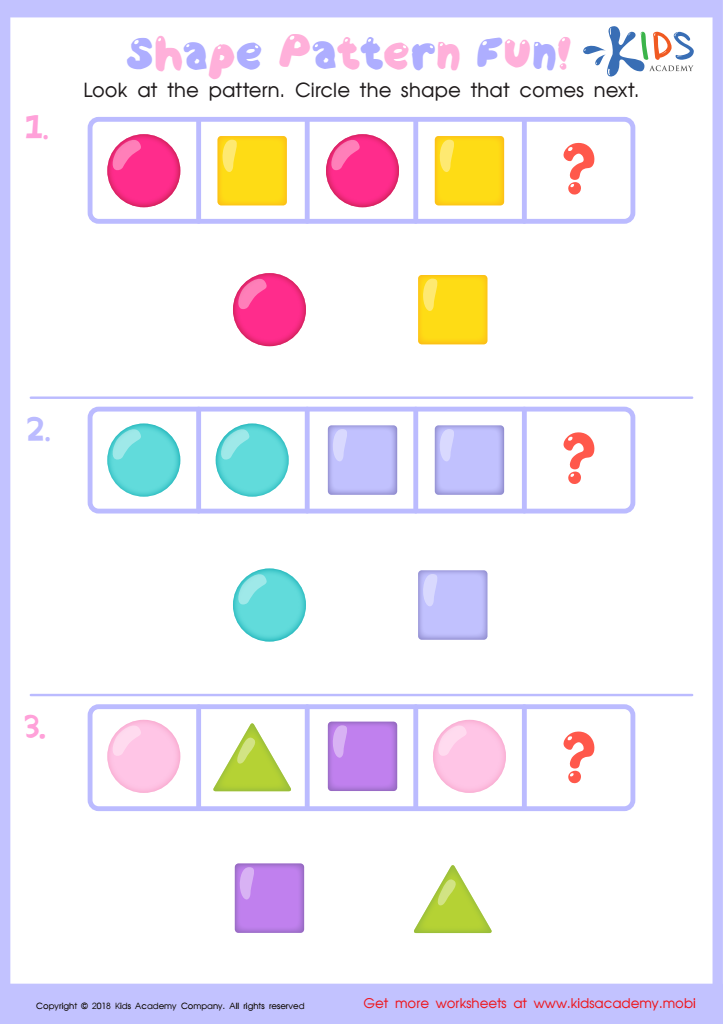

Shape Pattern Fun Worksheet
Parents and teachers should prioritize problem-solving skills related to normal 2D shapes for 5-year-olds because these foundational concepts play a crucial role in early childhood development. Learning about shapes enhances cognitive skills, helping children understand spatial relationships and improve their ability to analyze and interpret visual information.
Engaging with 2D shapes helps young learners develop critical thinking and reasoning abilities. As children explore the properties and characteristics of different shapes—such as circles, squares, triangles, and rectangles—they refine their ability to identify relationships and patterns. This can lead to more advanced skills in mathematics as they progress in their education.
Moreover, problem-solving activities involving shapes promote creativity and imagination, as children often experiment with combining shapes to form new figures. This not only builds their design skills but also fosters a sense of accomplishment and confidence when they successfully solve problems.
Furthermore, these skills contribute to better functioning in daily life, as being able to recognize and use shapes is essential for activities like drawing, building, and even street navigation. Thus, emphasizing shape recognition and problem-solving at an early age lays a crucial foundation for lifelong learning and adaptability.
 Assign to My Students
Assign to My Students











